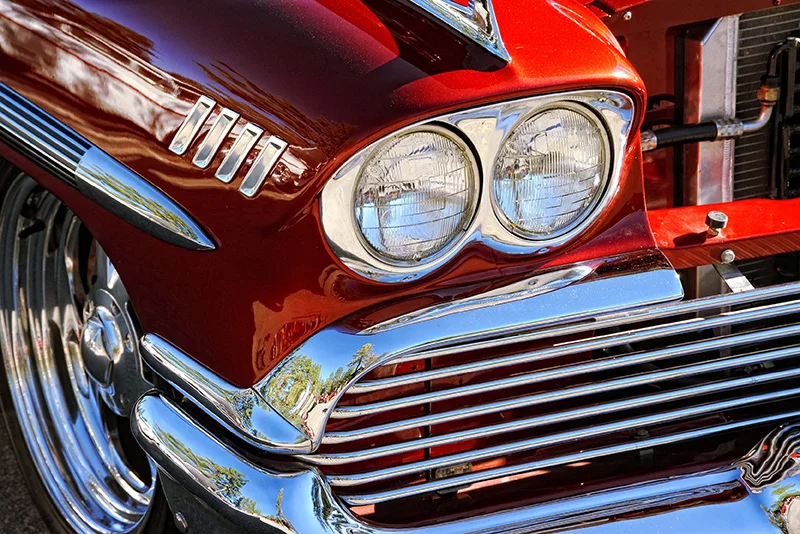Whether you recognise the term hot rod as a car or hot rodding as an activity, the phrases have a long history attached to them – so where did it all begin?
The exact definition as to what is a hot rod usually varies depending on who you ask. For many, hot rods are typically old, classic, or modern American cars that have been rebuilt or modified with large engines, purely for the purpose of more speed and acceleration. Mostly prevalent in the United States, hot rods are usually individually designed and constructed using components from a wide variety of old or new cars. These days, many are intended for exhibition purposes rather than for racing or everyday driving.
However, if the term “hot rod” is a noun, then hot rodding is more so a lifestyle embraced by those who are passionate about the practice. Some historians assert that the phrase “hot rod” is derived from “hot roadster,” while others explain that rods are key engine parts that heat up when pushed to achieve the extreme speeds hot rodding entails. Others believe that “hot” can even stem from a term used to describe stolen parts, although this is perhaps not the case in modern day usage – so where did it all begin?
The Origins Of Hot Rodding
In its most basic form, the fundamentals of hot rodding has always been the practice of reworking old parts into something new – and faster. The phenomenon isn’t exactly a new one though, and can be traced as far back as World War One.
The world’s first moving assembly line was introduced to the automotive industry by Henry Ford in 1913, which in turn flipped the manufacturing process on its head for the entire sector. Ford went on to crank out Model T’s in previously unheard of numbers, and at prices so low it brought motoring to the masses. Once those affordable new Ford models inevitably became cheap used cars, the stage was set for the first era of hot rodding to take shape.
Some of the more typical modifications were to strip off all nonessential parts, such as convertible tops, hood, bumpers, windshields and lowering the chassis in an effort to improve the vehicle’s aerodynamics. In turn, the engine was then modified by tuning and/or replacing with a more powerful type. Hot rod culture as we know it embraced all of these fundamentals, with the culture’s birthplace often considered as Southern California. After the events of World War II, everyday people would take refuge in racing their modified cars on the vast, empty dry lake beds northeast of Los Angeles.
It didn’t take long for these modifications to improve the appearance as well, leading to car shows taking off in the 1960s with coupes and sedans soon joining the hot rodding ranks. However, these heavier models usually underwent drastic surgery to chop their tops lower, and slope their windshields backwards.
As the practice grew in popularity around the nation, unfortunately so too did the number of casualties. Hot rodding had no rules, and the “speed contests” had little to no regulations to oversee the streetside events. Thus, it was almost inevitable that in 1937, the Southern California Timing Association was formed. With the development of more sophisticated timing systems, these processes helped a lot in making hot rodding a safer and more organised hobby, sport and overall pass time. In 1941, a monthly publication called Throttle Magazine was also designed, with the purpose being to track racing results, feature some of the better cars, and also reporting on new safety and speed issues.
While it initially appeared that World War II put an early end to hot rodding culture, once the war was over, the golden era of hot rods was only just about to begin. With time, money and a newfound lust for life on their hands, Californian servicemen found themselves with a burning desire to build their own dream cars from scratch. While hot rodding did attract a lot of negative attention due to safety concerns, the youth of America were quite simply obsessed.
Much like modern day car club meets, hot rodding provided a sense of community amongst like minded individuals – and of course, an escape. Although getting your hands on the vintage cart parts can be a tad more difficult in 2021, hot rodding is still a lifestyle that has an enormous following right around the world.

